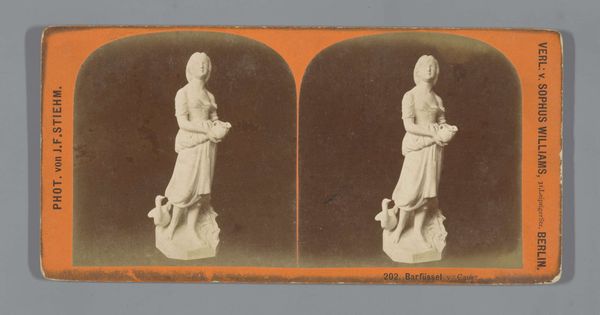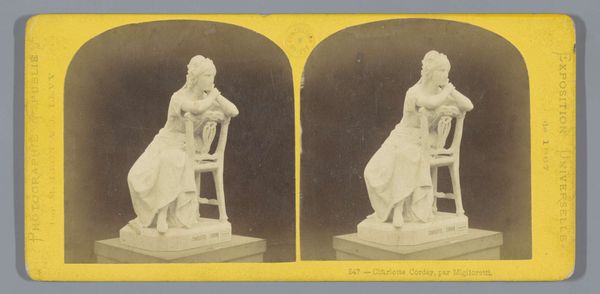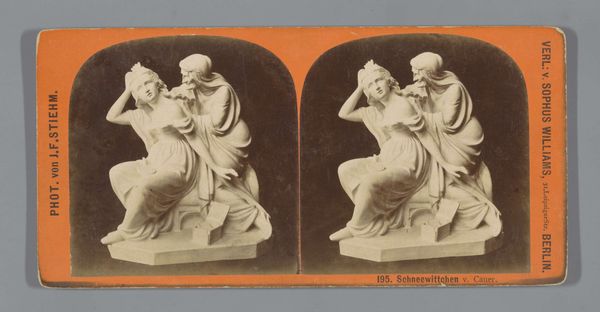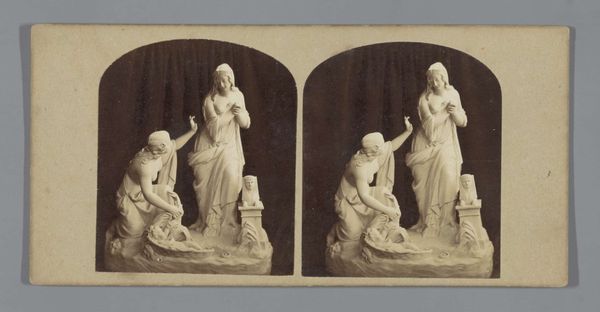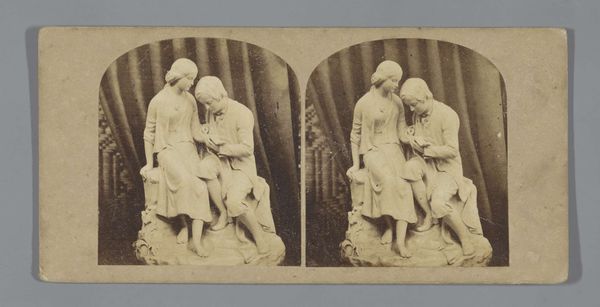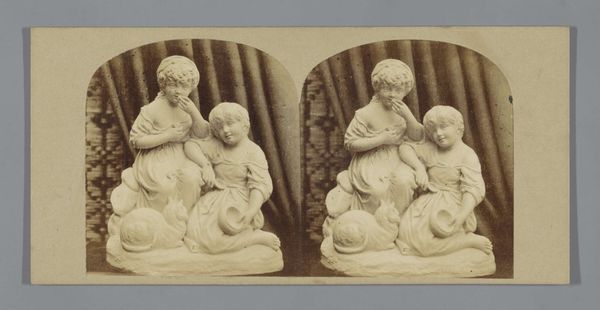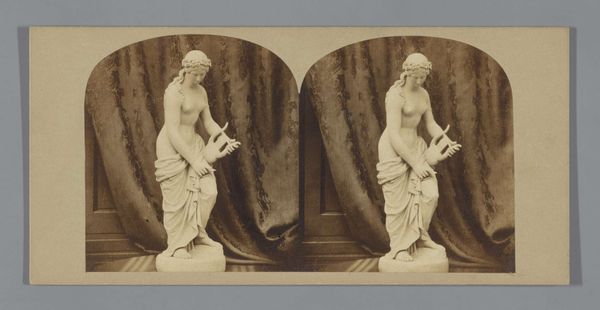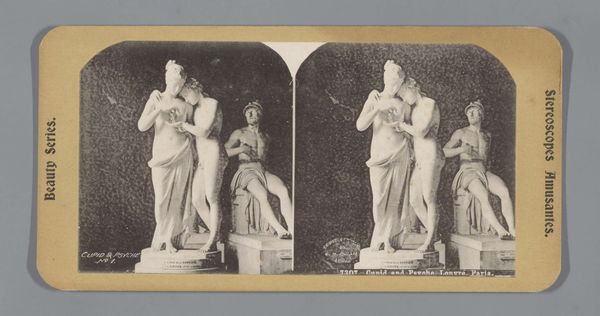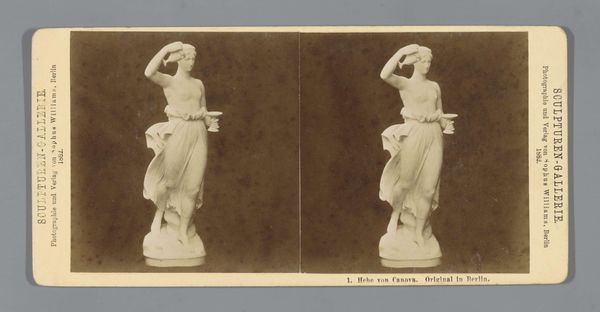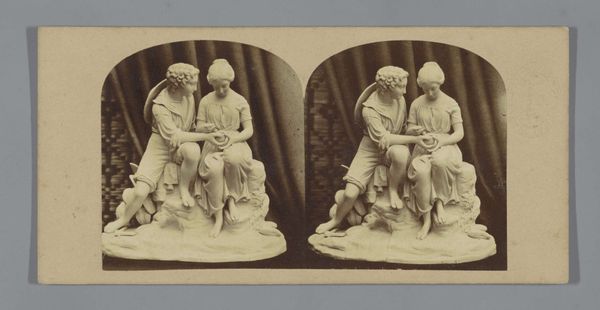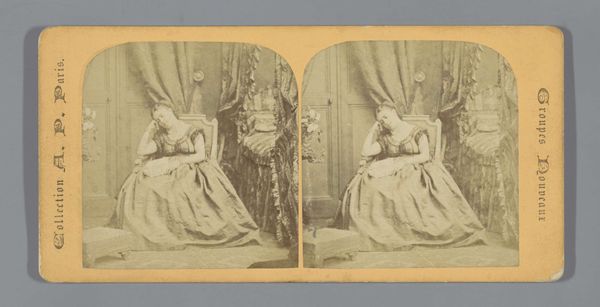
photography, sculpture
#
portrait
#
photography
#
sculpture
#
realism
Dimensions: height 84 mm, width 175 mm
Copyright: Rijks Museum: Open Domain
Editor: Here we have Johann Friedrich Stiehm’s photographic portrait of a sculpture, dating from around 1855 to 1890, called “Sculptuur van Assepoester die de vogels voert"—Cinderella feeding the birds. I find the classical pose and subject strangely juxtaposed with its almost documentary nature. How do you interpret this work? Curator: I see layers of meaning embedded in the symbol of Cinderella. She is not merely a figure from a children’s tale, but a representation of resilience and transformation. Feeding the birds adds another dimension: birds, historically, are messengers and symbols of freedom, linking the earthly with the divine. Consider how the pose reinforces the symbolism of servitude. Is it a posture of quiet strength, or of suppressed potential? Editor: That’s a great point. I hadn’t considered the birds as symbolic messengers. Does the act of photographing a sculpture change its inherent meaning? Curator: The act of photographing a sculpture freezes it in time, creating a copy for wider consumption. This photograph presents a three-dimensional form in a two-dimensional space. The symbolism shifts from the solitary object to the photographed record as cultural artifact. It democratizes art, but also distorts, by presenting the ideal versus reality. Do you think that relates to Cinderella? Editor: Maybe the photograph becomes like Cinderella's wish fulfilled—a transformation, but also a representation. Thank you, I'll consider how it relates to art production and society. Curator: And I will be looking at fairytales with new eyes, considering the role of photography in their lasting power.
Comments
No comments
Be the first to comment and join the conversation on the ultimate creative platform.
